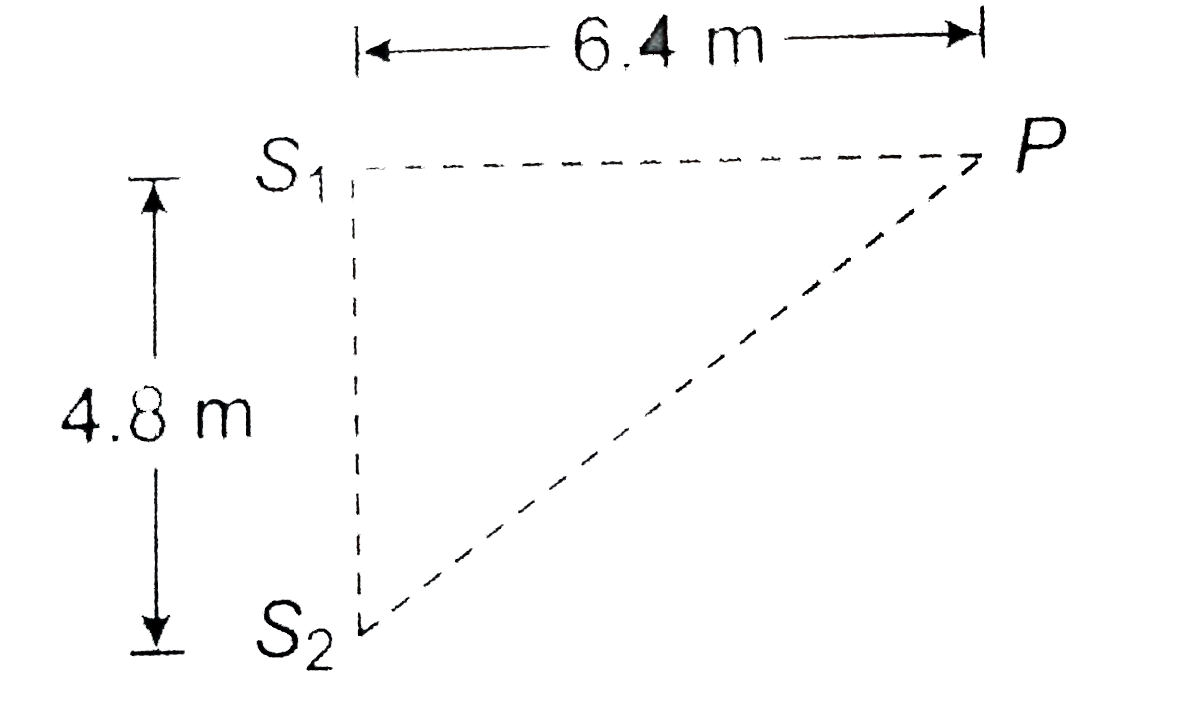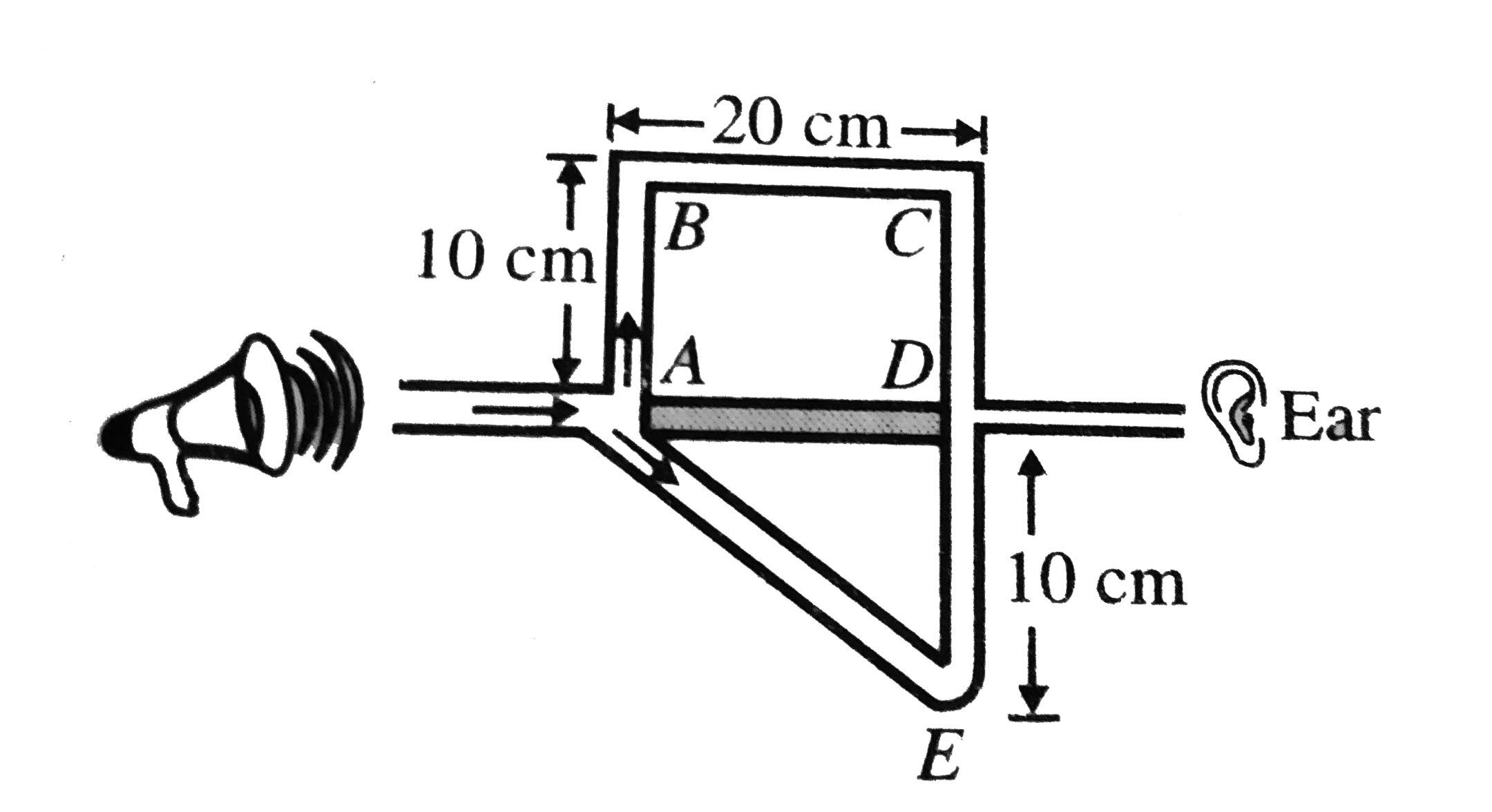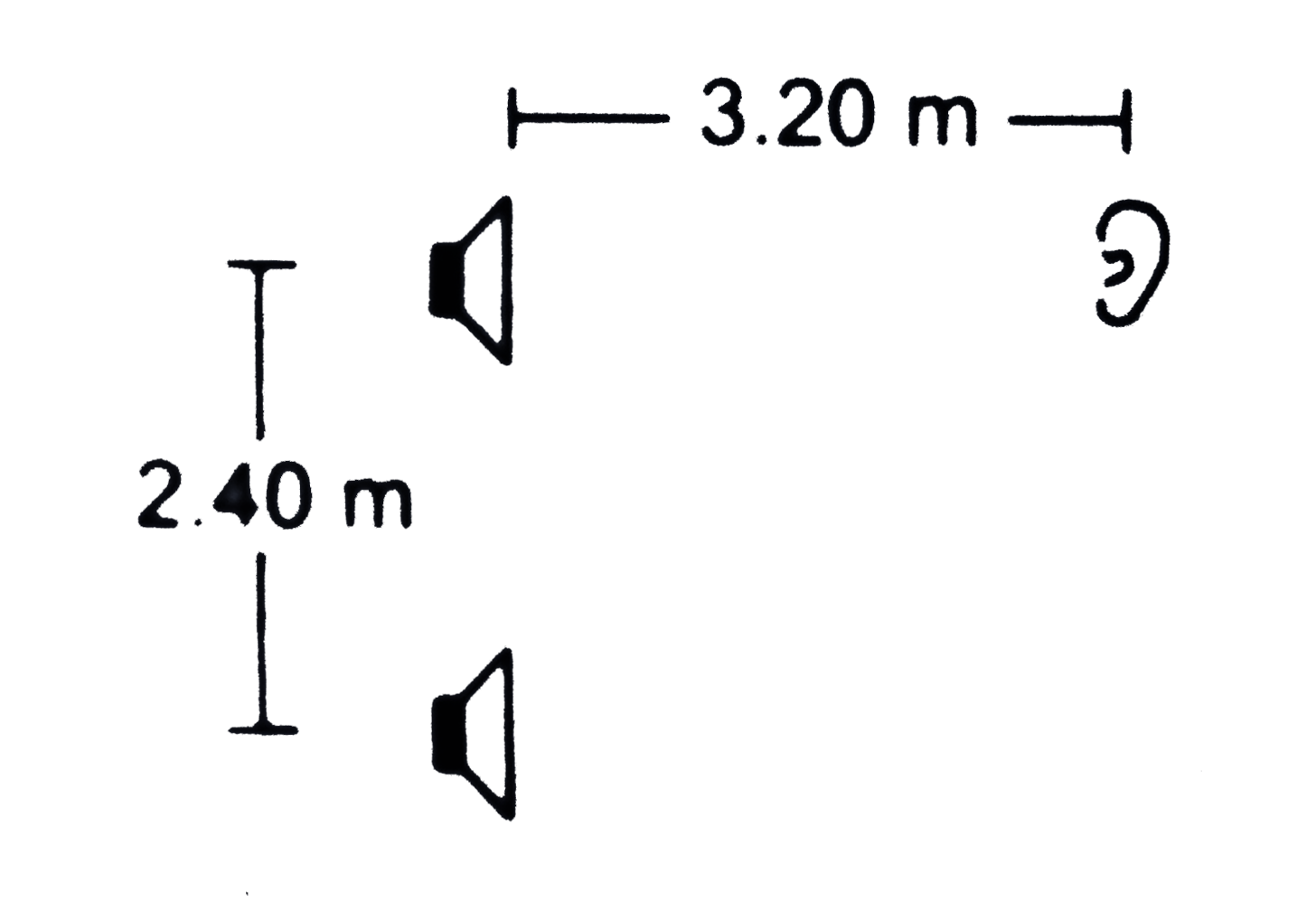Two audio speakers are kept some distance apart and are driven by the same amplifier system. A person is sitting at a place 6.0m from one of the speakers and 6.4m from the other. If the sound signal is continuously varied from 500 Hz to 5000Hz, what are the frequencies for which there is a destructive interference at the place of the listener ? Speed of sound in air = 320 m/s.
1200Hz, 2000Hz, 2800Hz, 3600Hz and 4400Hz.
Topper's Solved these Questions
- WAVE MOTION AND SOUNDBOOK - AAKASH SERIESCHAPTER - WAVE MOTION AND SOUNDEXERCISE - PROBLEMS (LEVEL - I)
60 Videos
- WAVE MOTIONBOOK - AAKASH SERIESCHAPTER - WAVE MOTIONEXERCISE - PRACTICE SHEET ADVANCED (INTEGER TYPE QUESTIONS)
10 Videos
- WAVE OPTICSBOOK - AAKASH SERIESCHAPTER - WAVE OPTICSEXERCISE - PROBLEMS (LEVEL - II)
20 Videos
Similar Questions
Two audio speakers are kept some distance apart and are driven by the same amplifier system. A person is sitting at a place 6.0 m from one of the speakers and 6.4 m from the other. If the sound signal is continuously varied from 500 Hz to 5000 Hz, what are the frequencies for which there is a destructive interference at the place of the listener? Speed of sound in air=320ms−1
View SolutionTwo audio speakers are kept some distance apart and are driven by the same amplifier system. A person is sitting at a place 6.0 m from one of the speakers and 6.4 m from the other. If the sound signal is continuously varied from 500 Hz to 5000 Hz, what are the frequencies for which there is a destructive interference at the place of the listener? Speed of sound in air=320ms−1
View Solution
Knowledge Check
Two loudspeakers are located 3 m apart on the stage of an auditorium. A listener at point P is seated 29.0 m from one speaker and 25.0 m from the other. A signal generator drives the speakers in phase with the same amplitude and frequency. The wave amplitude at P due to each speaker alone is A. The frequency is then varied between 20 Hz and 300 Hz. The speed of sound is 343 m/s.
At what frequency or frequencies will the listener at P hear a maximum intensity?A170 Hz onlyB57 Hz, 113 Hz, 170 Hz, 227 Hz, and 284 HzC113 Hz and 226 HzD86 Hz, 170 Hz, 257 Hz
Two sources are placed from a person P as shown in figure. The speed of sound in air is 320m/s.
(a)
If sound signal is continuously varied from 500Hz to 2500Hz, for which frequency listener will hear minimum sound intensity.
(b)
Find the frequencies in audible range (20−20000Hz) for which listener will hear maximum sound intensity.
View SolutionFigure 7.20 shows a tube structure in which signal is sent from one end and is received at the other end . The frequency of the sound source can be varied electronically between 2000→5000Hz. Find the frequencies at which maxima of intensity are detected . The speed of sound in air 340m/s.

View SolutionFigure 7.20 shows a tube structure in which signal is sent from one end and is received at the other end . The frequency of the sound source can be varied electronically between 2000→5000Hz. Find the frequencies at which maxima of intensity are detected . The speed of sound in air 340m/s.

View SolutionA person has a hearing range from 20Hz to 20kHz. What are the typical wavelength of sound waves in sir corresponding to these two frequencies ? Take the speed of sound in air as 344m/s.
View SolutionTwo stereo speakers are separated by a distance of 2.40 m. A person stands at a distance of 3.20 m directly in front of one of the speakers as shown in figure. Find the frequencies in the audible range (20-2000 Hz) for which the listener will hear a minimum sound intensity. Speed of sound in air =320ms−1

View SolutionTwo stereo speakers are separated by a distance of 2.40 m. A person stands at a distance of 3.20 m directly in front of one of the speakers as shown in figure. Find the frequencies in the audible range (20-2000 Hz) for which the listener will hear a minimum sound intensity. Speed of sound in air =320ms−1

View SolutionA person has a hearing range from 20Hz to 20kHz. What are the typical wavelength of sound waves in sir corresponding to these two frequencies ? Take the speed of sound in air as 344m/s.
View Solution
